Exploring the Waters of Mykonos: Waves and Culture
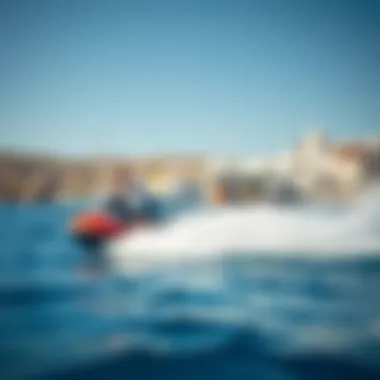
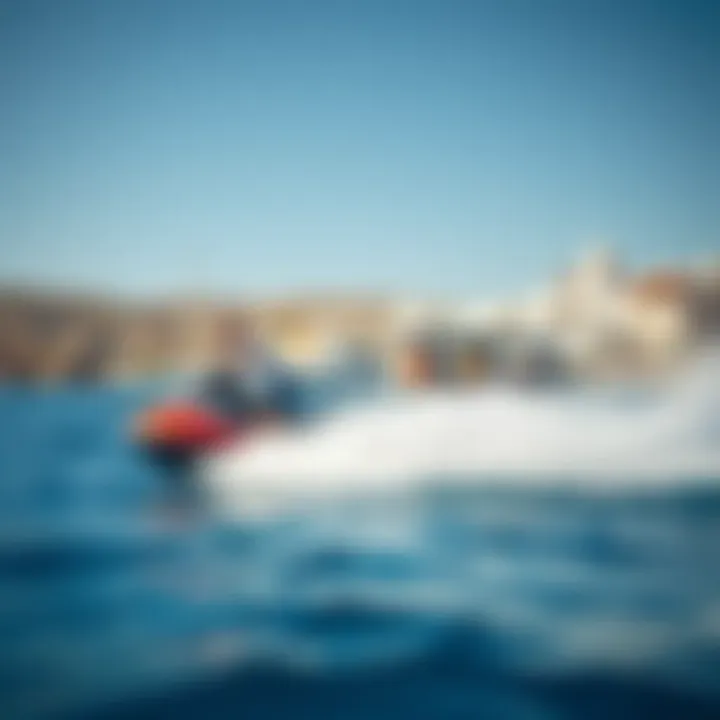
Intro
Nestled in the azure embrace of the Aegean Sea, Mykonos stands as a beacon for watersport lovers seeking more than just the mundane beach holiday. The island’s unique wave conditions combined with its rich cultural tapestry makes it an ideal playground for both novices and seasoned adventurers. From the gentle lapping of waves against the golden sands to the more vigorous swells that invite surfers, Mykonos offers a variety of experiences that resonate with an energetic spirit of exploration.
This island isn't just known for its lively nightlife; it's a sanctuary for those who wish to dive deeper into the aquatic adventures that it offers. With jet skiing, surfing, and sailing, Mykonos's watersport scene captivates the imagination and the senses of all who visit. Understanding the techniques involved, safety measures required, and the local culture surrounding these activities is key to making the most out of this Mediterranean gem.
In the sections that follow, we will provide you with an in-depth look at the essential tips and techniques for watersports, delve into vital safety practices and gear recommendations, and explore the best local spots to surf or sail—because the allure of Mykonos's waters is not merely to dip a toe in; it’s about immersing oneself in a culture that dances with the waves.
"Every wave has its own character; learning to read them is an adventure in itself."
Whether you're just starting or looking to refine your skills, Mykonos has something waiting for you—a thrilling journey that promises to be as enriching as it is exhilarating.
Preface to Mykonos Waves
When one thinks of Mykonos, images of sun-soaked beaches and vibrant nightlife often come to mind. However, nestled amidst this well-trodden paradise lies another enticing allure: the waves of Mykonos. These aren't just any waves; they are a significant part of the Aegean's character, shaping both the landscape and the cultural tapestry of this Greek island.
Understanding the waves is crucial for both novice and seasoned watersport enthusiasts. It is not just about the thrill of riding the surf or the adrenaline rush of jet skiing; it’s about appreciating the rhythm and nuances of this unique marine environment. Factors such as the island's geographic features influence how waves form and behave, while the climatic conditions dictate when these waters are best suited for various activities.
There’s a certain charm in getting to know the subtleties of the water; every swell has its story, and every tide brings a new encounter. Local surfers will often tell tales, their experiences colored with a depth of understanding that goes beyond mere sport.
Becoming aware of these elements opens up a world of possibilities in Mykonos. Here, the waves aren’t simply a backdrop; they are integral to interconnecting nature, sport, and local culture. Let’s dive deeper into this aquatic narrative.
Geographic Features Influencing Wave Patterns
The geography of Mykonos plays a starring role in shaping its wave patterns. The island, with its rugged coastline, rocky outcroppings, and sheltered bays, provides a varied playground for watersport aficionados. The northern shores, for instance, generally experience swells driven by the strong northern winds known as the Meltemi, especially during the summer months. This wind not only stirs up waves but also creates a unique surfing landscape, offering different levels of challenge depending on the beach.
Contrastingly, southern beaches like Elia and Super Paradise boast softer swells which are great for beginners.
The interplay between the wind direction and the underwater topography can yield waves of diverse heights and breaks. Surfers often assess these conditions before heading out, looking for that sweet spot where their skill matches the swell. Even jet skiers and sailors must be attuned to the geometry of the coast, as certain points offer more tranquil conditions that allow for easier navigation, while others might be too turbulent to visit.
A good resource for tracking local wave patterns is the Wunderground website, which provides detailed forecasts.
Climatic Conditions and Their Impact on Watersports
The climate in Mykonos is made up of a warm Mediterranean atmosphere, characterized by hot summers and mild winters. This weather is almost tailor-made for those indulging in watersports. As the temperature rises, so too does the urge to dive into the cool Aegean waters. However, beyond just warmth, the seasonal winds are paramount.
During the summer months, the Meltemi wind kicks up; it's a fierce beast that can frustrate some but delights others. For surfers, it’s a chance to catch larger waves, turning the ocean into a living canvas of frothy peaks. However, this wind can also pose challenges for beginners. Understanding local forecasts and marine conditions is essential, as these factors can dictate the safety and enjoyment of the watersport experience.
On the other hand, autumn and spring present a calmer atmosphere, suitable for those more interested in leisurely sailing or paddleboarding. Moreover, the typically gentle breezes provide an opportunity for novices to ease into watersports without the daunting forces of stronger winds.
To truly appreciate the natural essence of Mykonos waves, acknowledge the unique rhythm of the four seasons and how they introduce new possibilities for water lovers. Every time the ocean breathes, there’s a different adventure just waiting to be had.
Popular Watersports in Mykonos
The allure of Mykonos is undeniable, especially when it comes to its watersports scene. This vibrant island in the Aegean Sea offers a myriad of thrilling activities that beckon both seasoned athletes and newcomers alike. Exploring watersports in Mykonos goes beyond just leisurely recreation; it's a lifestyle intertwined with local culture, stunning landscapes, and the ever-changing sea.
Surfing: Riding the Local Waves
Mykonos boasts a unique wave profile that resonates with both beginners and seasoned surfers. The island's geographical features create ideal conditions for different skill levels, making it a hotspot for people looking to catch some quality waves.
Waves Suitable for Beginners and Experts
The waves around Mykonos can be surprisingly accommodating. For novice surfers, beaches like Kalafatis offer gentle waves that provide a safe learning environment. These manageable swells are great for practicing balance and technique without overwhelming beginners. On the flip side, more experienced surfers will find thrill in the harder, ruby-hued surf at Elia Beach, where waves often generate high energy and excitement. This duality is what makes surfing in Mykonos a standout choice within the realm of watersports.
The key characteristics of these waves not only enhance the surfing experience but also encourage a blend of learning and adventure. Beginners feel secure enough to refine their skills, while experts can revel in the challenge. Additionally, using local surf schools can greatly enhance your surfing journey, proving beneficial in teaching proper techniques and safety measures.
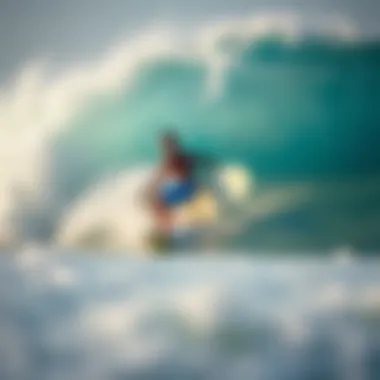
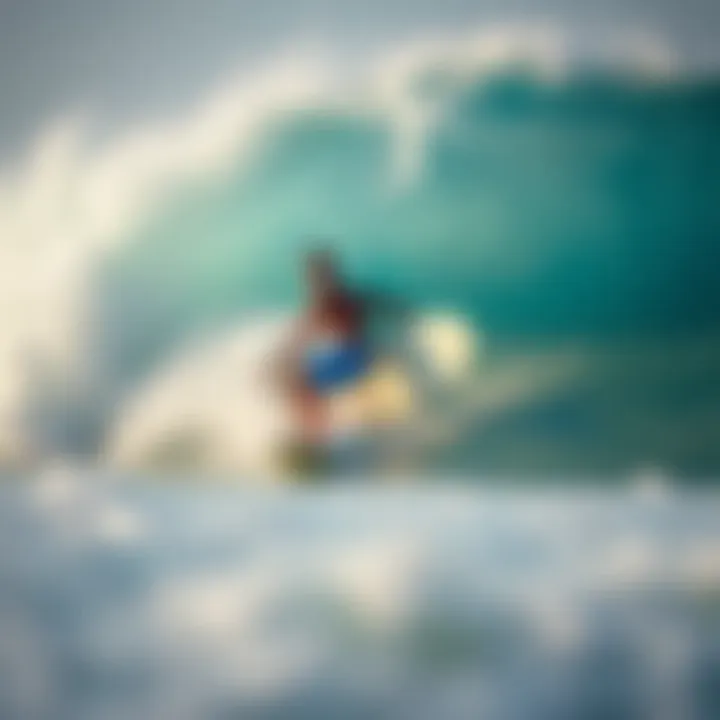
Best Surfing Beaches in Mykonos
Identifying the best surfing beaches is crucial for a successful day on the water. Kalafatis Beach is often celebrated for its consistent waves and amenable conditions. It's a favorite among locals for a reason; it offers both beauty and utility for surfers of all backgrounds. Another notable spot is Agios Ioannis, where the picturesque backdrop merges with exhilarating surf experiences.
These beaches not only cater to surfers but also provide a wealth of amenities, like rental shops and instructors, making it easier for anyone interested in diving into the surfing world. Ultimately, these factors contribute to Mykonos being an ideal watersport attribute in the broader context of the islands many offerings.
Jet Skiing: A Thrill on the Water
For those seeking an adrenaline rush, jet skiing serves as an exhilarating alternative to traditional watersports. The open seas around Mykonos present the perfect playground for this fast-paced adventure, and exploring these waters on a jet ski can yield unforgettable moments.
Top Locations for Jet Skiing Adventures
Not all stretches of water are created equal, and Mykonos is home to some top jet skiing spots. The southern coastline is particularly famous for smooth, expansive waters that are ideal for thrilling rides. Elia Beach is a go-to destination, known for its scenic views and expansive space. Here, jet ski enthusiasts can wander along coastlines, indulging in refreshing sea breezes and breathtaking vistas. Plus, nearby coves create ideal stopovers for a quick break.
The key aspect contributing to Mykonos’ reputation as a jet skiing hub is its rich diversity of environments. From calm bays to choppier waters, the experience can be tailored to suit individual preferences and skill levels. However, just as captivating as the ride is knowing where to operate safely to prevent accidents on the busy waters.
Safety Tips for Jet Ski Enthusiasts
Jet skiing is not just about speed; safety plays an essential role in enjoying the experience. Proper gear, like life jackets, is non-negotiable. Familiarizing oneself with the jet ski's controls before setting out is also critical. Operators should be aware of local laws, such as distance regulations from coastal swimmers and other watercraft.
Additionally, consider checking the jet ski's mechanical condition before embarking on your adventure. Simply put, taking adequate precautions can make for a more enjoyable outing and creates a culture of safety in watersports overall.
Sailing: Exploring the Aegean Sea
Sailing in Mykonos offers a unique blend of scenic beauty and cultural history, making it a captivating choice for any traveler. Navigating the Aegean Sea’s vibrant waters is an experience steeped in tradition, combining elements of adventure with the serene art of sailing.
Chartering Options for All Budgets
One of the most appealing aspects of sailing in Mykonos is the variety of chartering options available. Whether you're interested in a luxurious private yacht or a budget-friendly sailboat, there’s something for every wallet. Local companies cater to a range of preferences, allowing for half-day or full-day charters, giving people the chance to explore iconic sites like Delos Island and uninhabited beaches off the coast.
What sets this experience apart is the flexibility it offers. Families and individual travelers alike can select a vessel that matches their needs, making sailing accessible. This diversity ensures everyone can embrace the beauty of Mykonos from a sailors’ perspective, enhancing their overall experience on the island.
Local Sailing Routes and Hidden Gems
Exploring local sailing routes can yield surprising treasures. For example, the lesser-known coves around the vicinity of Rhenia Island feature azure waters and pristine beaches, all while avoiding the busier tourist spots. These hidden gems are more than just pretty views; they provide an opportunity to experience a piece of Mykonos away from the crowds, which is often deeply appreciated by sailors seeking tranquility.
The key takeaway of exploring these routes is the chance to form a connection with nature and local culture. Travelers can immerse themselves in the rich history of the area, making the journey not just about the destination, but the enchanting moments along the way.
Above all, watersports in Mykonos weave together adventure, community, and culture. Whether through surfing, jet skiing, or sailing, each activity invites participants to explore the rich tapestry of the island, creating memories that echo far beyond the waves.
Cultural Context of Watersports
The essence of Mykonos extends far beyond its sunlit beaches and vibrant nightlife. At the heart of this enchanting island lies a rich cultural tapestry woven with the threads of maritime traditions and water activities. Understanding the cultural context of watersports in Mykonos unveils the profound connections between the local community, their history, and the natural environment. This cultural backdrop not only enhances the experience for visitors but also fosters a unique bond between athletes, residents, and the island itself.
Historical Significance of Water Activities in Mykonos
The sea has played a pivotal role in shaping Mykonos’ identity. Historically speaking, the island's location in the Aegean has made it a strategic point for trade and navigation. From ancient times, fishermen relied on the bountiful seas for their livelihoods, relying on small boats to navigate both the waters and the tides. Water activities were not just a means of survival but became a way to connect with the spaces surrounding the island.
As the centuries rolled on, Mykonos gained prominence as a trade hub, with its ports teeming with vessels from both the East and West. This maritime legacy is alive and well today, influencing the watersports scene. Today, visitors engaging in activities such as surfing or sailing are participating in a long-standing tradition, honoring the skills passed down through generations. This sense of history creates an appreciation that enhances the overall experience.
Local Festivals Celebrating Watersports
Watersports in Mykonos are often at the forefront of local celebrations, showcasing both skill and community spirit. One of the most notable events is the Mykonos Watersports Festival, held annually to highlight different activities like jet skiing and sailing. Here, both locals and tourists gather to witness competitions, partake in workshops, and enjoy live music – a festival that truly brings the island to life.
In addition, the Aegean Sea Festival explicitly incorporates watersports, featuring races and demonstrations that celebrate local talent and sportsmanship. These gatherings not only provide a spectacle for visitors but also allow local athletes to showcase their skills and inventiveness.
Such events are steeped in tradition and have a dual purpose: promoting Mykonos as a premier watersport destination while fostering camaraderie among participants. Beyond mere competition, these gatherings serve as a bridge connecting Mykonos' historical context to its present-day culture.
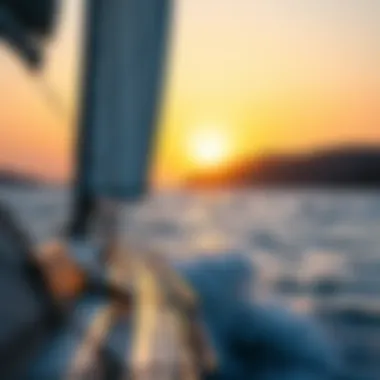
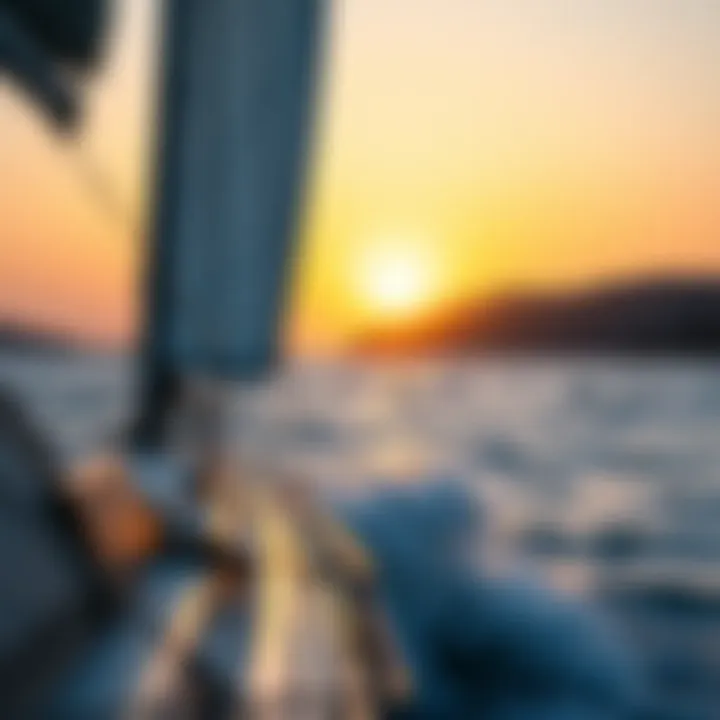
These cultural dimensions enrich the watersports experience in Mykonos. They reflect both the island's historical relationships with the sea and the ongoing celebration of that connection. When engaging in watersports, participants are not just riding waves or navigating waters; they are joining a vibrant community, stepping into the footprints of those who came before, and embracing the spirit of the Aegean.
Technical Aspects of Watersports
When one dives into the vibrant waters of Mykonos, a whole new world of thrills and challenges unfold. Understanding the technical aspects of watersports can enrich experiences for both amateurs and veterans alike. Mastery of these elements not only amps up safety but also enhances performance, ensuring that the waves and winds become allies rather than adversaries.
Understanding Surfing Techniques
Surfing in Mykonos is an exhilarating blend of skill and art. Techniques play a crucial part in harnessing the power of the ocean. For beginners, the key to success lies in the stance. Standing with feet shoulder-width apart and knees slightly bent sets up a stable foundation. Paddling efficiently to glide over waves is like dancing; timing is everything. When a wave approaches, catching it at the right moment is vital. The feeling of being powered by the wave is unparalleled, but it takes practice.
Here are some fundamental techniques surfers should focus on:
- Paddle Technique: Use your arms to "swim" in a seamless motion, keeping your body buoyant. Maybe think of it as slicing through butter, smooth and effortless.
- Pop-Up: This is the transition from lying on the board to standing. The key is speed and precision — think of it as a dramatic leap but with a touch more finesse.
- Trimming: Once standing, weight distribution plays a role in maintaining balance and speed along the wave face. Adjusting your stance will help you maneuver with the flow of water.
Mastering these techniques can elevate any surfing session from mundane to magical.
Jet Ski Maneuvering Fundamentals
Jet skiing can be an adrenaline-packed way to experience the Aegean Sea. However, understanding maneuvering basics before zooming off is essential. The first fundamental rule is respect for the craft and the water. A confused jet skier can become a danger not just to themselves but also to others.
To maintain control and safety during jet skiing, consider these tips:
- Throttle Control: The throttle is your best friend — too much acceleration can lead to instability. A gentle hand is preferred, gradually increasing speed as comfort builds.
- Turning Techniques: Unlike turning in a car, on a jet ski, you must lean into the turn. The body weight shifts to guide the ski, a bit like riding a well-trained horse; balance is key.
- Stopping Safely: Bring your jet ski to a controlled stop by easing off the throttle well before reaching your intended stop. Abrupt stops might lead to either falling off or oversteering.
With some patience, the thrill of jet skiing becomes a rewarding experience, merging excitement with a sense of freedom on the water.
Navigational Skills for Sailors
Navigating the waters of Mykonos is not mere child’s play; it requires knowledge, skill, and even a bit of strategy. Sailors must cultivate a strong grasp of local conditions and navigation rules. Understanding how to read the wind and tides can mean the difference between smooth sailing and a choppy encounter.
Navigational skills include:
- Understanding Charts: Maps detailing coastal depths and hazards are crucial. A sailor must become familiar with symbols and note important landmarks, much like a painter studies their canvas.
- Using Instruments: Devices like compasses, GPS units, and knots help ensure safe voyages. Knowing how to operate these aids is essential to avoid drift and keep course.
- Deciphering Weather Signs: Knowledge of local weather patterns — like sudden gusts — can save lives. A good sailor learns to read the skies and waters like a seasoned storyteller reading between the lines.
These skills reinforce the sailor's connection to the sea while enhancing overall safety and enjoyment on the water.
Developing proficiency in these technical aspects of watersports can significantly enhance anyone's experience, enabling a deeper understanding and appreciation of the stunning waters of Mykonos.
Safety Protocols for Watersport Enthusiasts
Engaging in watersports can be exhilarating, but safety must always take center stage. It's not merely about the rush of the waves or the thrill of jet skiing; understanding safety protocols ensures that you can enjoy these activities while keeping risks at bay. The waters around Mykonos, while inviting, carry their unique challenges and unpredictable conditions. Thus, understanding safety isn’t just a precaution; it’s a necessity. It allows enthusiasts to focus on what truly matters: the adventure and the experience.
Essential Safety Gear for Different Activities
Before setting foot on the waters, knowing which safety gear to don for each activity is crucial. Here is a breakdown:
- Surfing:
- Jet Skiing:
- Sailing:
- Wetsuit: Keeps you warm and provides buoyancy.
- Leash: Attaches to your board, preventing loss after a wipeout.
- Helmet: Sometimes overlooked, it's essential for head protection, especially in busy surf spots.
- Life Jacket: The most crucial piece of equipment. Ensure it's the appropriate size and rated for your activity level.
- Whistle or Signal Device: This is important for alerting others in case of emergency.
- Protective Clothing: Consider wearing eye protection and gloves for a better grip and warmth.
- Floatation Device: Always have a personal flotation device (PFD) nearby, even if you're a seasoned sailor.
- First Aid Kit: Accidents happen, so having a kit stocked can make a real difference.
- Communication Device: Bringing a radio or cell phone can be vital to stay in touch with others or in case of emergencies.
The right safety gear not only protects you but can also enhance your performance in each activity.
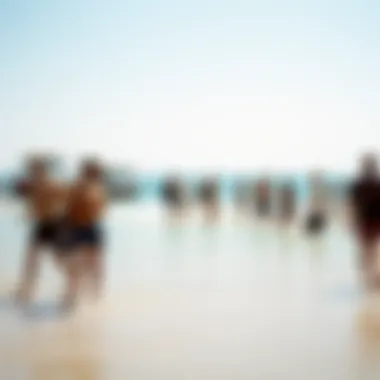

Understanding and Responding to Marine Conditions
The marine environment around Mykonos is as dynamic as it is beautiful. Changes in weather, tides, and currents can happen quickly, often catching the unprepared off guard. Understanding these conditions helps in making informed decisions about when and where to engage in watersports. Here’s how to respond:
- Check Local Reports: Always consult local weather and marine condition forecasts through reliable sources like the National Weather Service
- Tides and Currents: Being aware of tide times is critical. An outgoing tide can create strong currents, which affects both surfing and sailing.
- Wind Conditions: Wind can greatly influence your experience on the water. For instance, high winds can create large waves that may be challenging even for experienced surfers. Using resources like Surfline can keep you informed about specific conditions.
"Safety is not a gadget but a state of mind. Understanding your environment and equipping yourself appropriately builds not just safety, but confidence in watersports."
By engaging with the marine environment responsibly, you'll not only protect yourself but also help preserve the natural beauty of Mykonos for future adventurers.
Continuing to prioritize safety, both through the right gear and awareness of conditions, will not only enhance your experience but ensure you're contributing positively to the community of watersport enthusiasts in Mykonos.
Environmental Considerations in Watersports
Engaging in watersports in Mykonos brings delight and exhilaration, but it also necessitates an awareness of how these activities impact the environment. The Aegean Sea, known for its incredible beauty and rich biodiversity, is a delicate ecosystem that requires stewardship. Understanding the environmental implications of watersports equips enthusiasts to partake in these adventures responsibly while preserving the beauty that draws them to the water in the first place.
Sustainable Practices for Water Activities
In Mykonos, where tourism thrives on stunning beaches and crystal-clear waters, sustainable practices must be a priority for watersport lovers. Here are some important strategies to consider:
- Use Eco-Friendly Equipment: Opt for biodegradable inflatable items and eco-conscious surfboards made from sustainable materials. Brands like Sustainable Surf, for example, offer surfboards which have a minimal carbon footprint.
- Proper Waste Management: Carry reusable water bottles, snack containers, and waste bags to keep the beaches clean. Plan on taking any trash generated during your activities back with you.
- Respect Wildlife: Maintain a safe distance from marine life. Many species are endangered, and protecting their habitats is critical to their survival. Watch out for nesting sea turtles during the season.
- Participate in Beach Clean-Ups: Joining local initiatives organized by volunteers or environmental groups not only contributes to cleaner beaches but builds a sense of community among watersport enthusiasts.
Incorporating these practices into routine water activities doesn’t just help the environment; it fosters a culture of gratitude towards the natural resources we enjoy.
Impact of Watersports on Local Ecosystem
Watersports can significantly affect the local ecosystems in various positive and negative ways. Here’s a closer look at these impacts:
- Positive Impacts:
- Negative Impacts:
- Ecotourism Support: A rise in eco-friendly watersport activities can bolster local economies while promoting environmental awareness; this helps sustain both livelihoods and natural resources.
- Conservation Funding: Many watersport operators contribute to marine conservation efforts, with a portion of proceeds directed towards preserving the ocean environment.
- Erosion of Coastal Areas: The high foot traffic from beachgoers and the water activities can lead to coastal erosion, especially in softer sand areas. Preventive measures, like designated pathways, can mitigate this effect.
- Disturbance to Marine Habitats: Jet skiing and high-speed boating can disrupt quiet marine environments. Care should be taken to avoid shallow areas and respect no-wake zones.
"Respecting the environment is as crucial as the thrill of riding the waves; without our oceans, our watersports will eventually cease to exist."
By being mindful of these factors, every watersport participant can contribute significantly to maintaining the pristine condition of the Mykonos coastline, securing the joy of water activities for future generations. The ocean is not just a playground; it is a habitat requiring pregnant respect and careful management. For further reading on sustainable tourism practices, visit Wikipedia on Ecotourism.
Finale
As we draw our exploration of the waters of Mykonos to a close, it's vital to reflect on the threads that weave together the essence of this vibrant destination. The confluence of thrilling watersports, stunning natural landscapes, and rich cultural heritage has created an environment ripe for adventure seekers and culture enthusiasts alike. Understanding the importance of these elements helps both visitors and locals appreciate the balance between recreation and conservation, ensuring that Mykonos remains a coveted locale for years to come.
The Future of Watersports in Mykonos
Looking ahead, the future of watersports in Mykonos seems as dynamic as its waves. The local government and environmental organizations are increasingly aware of the need to sustain this paradise. With an influx of tourists, there's a pressing demand for innovative solutions that enhance the watersport experience without wreaking havoc on the natural habitats.
For instance, the adoption of eco-friendly equipment is on the rise. Previously, vibrant jet skis and surfboards often left a substantial mark on the environment, but companies like Ocean Kayak and SUP ATX are paving the way by creating sustainable models. This shift not only satisfies conservationists but also appeals to environmentally conscious tourists.
Moreover, incorporating technology into watersports presents fresh opportunities too. Imagine the possibility of augmented reality experiences for sailing, or smart buoy systems that improve safety measures in real-time. Such innovations could redefine how we interact with the waters, making it easier to enjoy while also being aware of the surrounding ecosystem.
Encouraging a Local and Global Watersports Community
Creating a robust community of watersport enthusiasts—both local and international—is crucial for the future prosperity of Mykonos's marine culture. As more individuals find joy in water-related activities, there arises a natural inclination to share these experiences, fostering camaraderie and a sense of belonging.
To achieve this, local businesses must step up their game. Organizing events like the Mykonos Watersport Festival attracts a global audience while promoting local talent. Collaborations between international athletes and local instructors can enrich the learning environment, where everyone learns and grows together.
Additionally, leveraging online platforms for community engagement is essential. Social media channels like Facebook and Instagram provide expansive outreach, allowing enthusiasts to share tips and experiences. Local tourism boards can harness these platforms to promote events, workshops, and paddle excursions, thus bridging geographical gaps and encouraging a wider global participation in the Mykonos watersport scene.
In summary, the path forward is laden with potential. Nurturing local talent, embracing sustainability, and amplifying community spirit create a cascading effect benefitting all who cherish the waters of Mykonos.
"A community focused on preserving nature fosters a rich tapestry of life on the waves, encouraging a sustainable culture that thrives for generations."
By investing in these future-oriented strategies, Mykonos can ensure that its watersports heritage continues to thrive, accommodating adventurers and nurturing the local culture.















